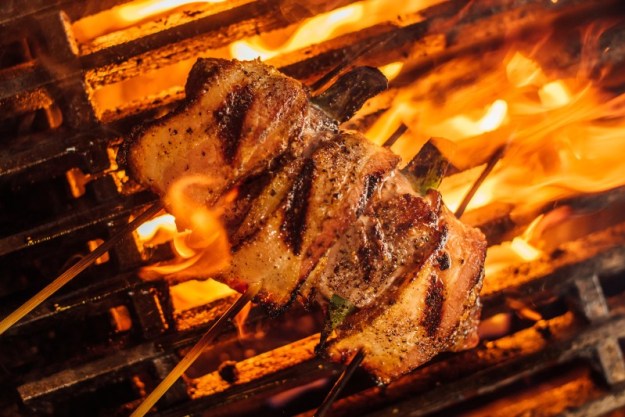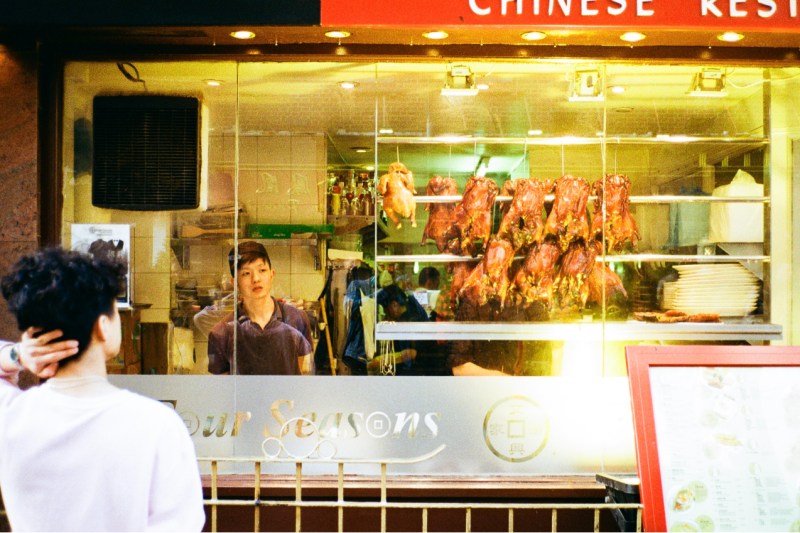
In China, duck is often the poultry of choice instead of chicken. Served roasted, boiled, braised, or smoked, duck is a common sight in restaurants and home kitchens. In southern China (the Cantonese speaking areas), the most popular method of duck preparation is roasting. These Cantonese style roast ducks are ubiquitous, often seen hanging by metal hooks in the windows of bustling Chinese restaurants.
But Cantonese roast duck is a complex process, steeped in technique. To help guide us through this amazingly intricate dish, The Manual has enlisted the help of Chef Steven Chin of YāYā in Portland, Oregon. Yā, which means duck in Mandarin, is a recently opened Chinese restaurant on Alberta Avenue that features a menu of authentic Cantonese barbecue dishes like roast duck, soy sauce chicken, crispy pork belly, and char siu. Chin is a second-generation Chinese American who developed a love for Chinese barbecue while visiting his grandparents’ grocery store in Manhattan Chinatown as a child.
Related Guides
Peking Duck vs Cantonese Roast Duck?
Cantonese roast duck is often misclassified as Peking duck by diners and even restaurants. Since both items are globally popular, roasted whole and sliced, the two duck dishes often get conflated with one another. But despite some of the physical similarities, these two dishes are distinctly different.
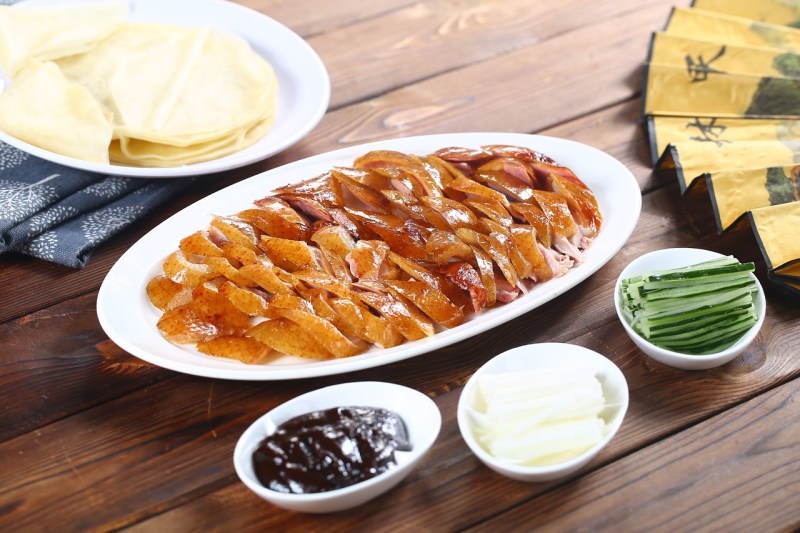
Peking duck originates from Beijing and was traditionally an imperial dish for royalty. Even now, Peking duck is a special occasion dish and can be quite expensive. The preparation for Peking duck is complex and can take several days, from the seasoning to the air drying and roasting. The skin is the star for Peking duck. To achieve this element, chefs will blow air between the skin and meat of the raw duck to separate the two (traditionally by cutting an incision into the skin and blowing by mouth, although most modern places now will use an air pump). Peking duck is roasted hanging in a closed wood-fire oven (fruit wood is common). Another distinctive element of Peking duck is the carving and accompaniments, both highly elaborate. In Peking duck, chefs will make about 108 cuts to carve a whole duck. The meat and skin will be separated from the bone, meant to be enjoyed together or individually. The duck pieces can also be rolled inside a thin crepe with scallions, cucumbers and hoisin sauce.
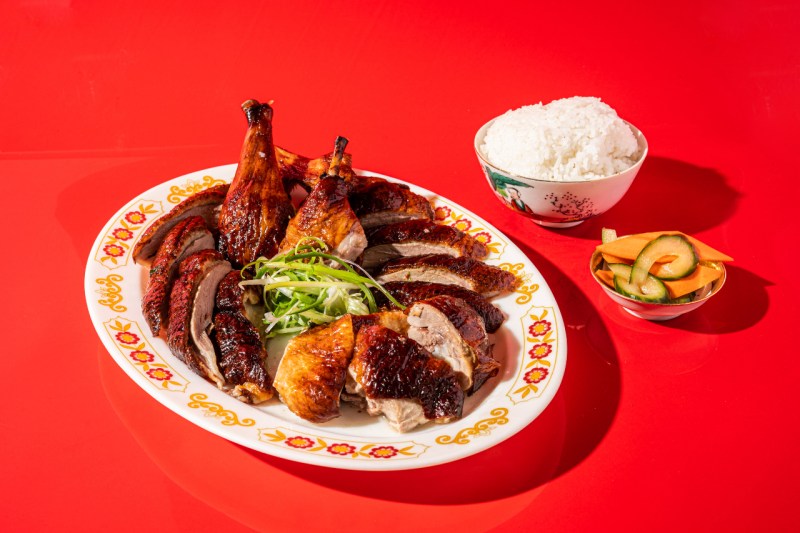
In comparison, the carving process for Cantonese roast duck is noticeably less intricate. The duck will be chopped, usually by a heavy Chinese cleaver into pieces with both meat, skin and bone still attached. Another big difference is the taste and texture. The abdominal cavity of a Cantonese roast duck will be stuffed with aromatics like star anise, scallions, and ginger before being sewn shut for cooking. This infusion of spices flavors the duck as it roasts. Cantonese roast duck skin will also be less crispy when compared to Peking duck. But that doesn’t mean Cantonese duck is a slouch when it comes to excellent skin texture. Before serving, some Cantonese duck chefs will pour hot oil over the duck to tighten the skin and to release a pleasant aroma.
How to Eat
Compared to the more expensive Peking duck, Cantonese roast duck is more of an egalitarian dish, served at family dinners or a quick lunch. Most Cantonese barbecue restaurants will serve roast duck pieces over a plate of hot rice or a bowl of noodles. Because Chinese barbecue restaurants feature more than just duck, many of popular barbecue plates will include roast duck with other items like soy sauce chicken or char siu, making them a meat lover’s paradise.
Cantonese roast duck will also frequently grace the holiday table. In this setting, the duck is meant to be eaten as part of a larger and more elaborate meal, complete with vegetable stir frys, seafood and soups. Unlike Peking duck, Cantonese roast duck will usually not be the centerpiece of these bigger meals.
The Techniques of Cantonese Roast Duck
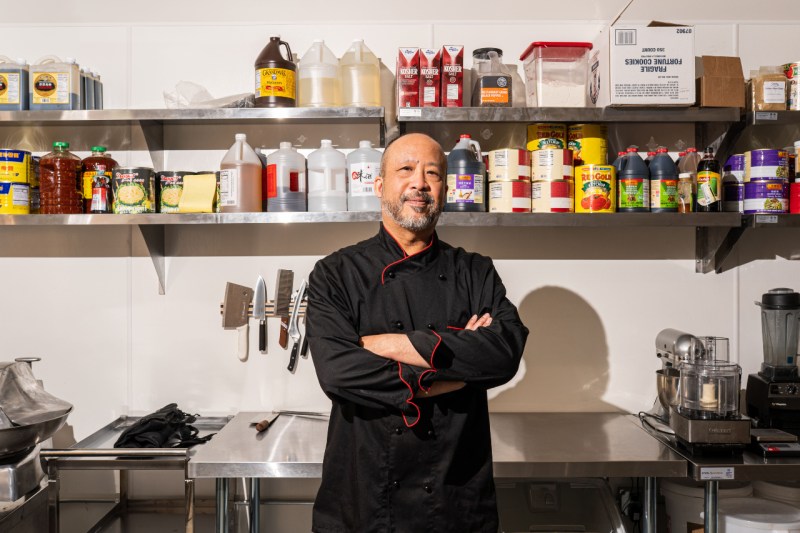
In Chin’s opinion, Cantonese style roast duck is a complex dish that is quite challenging to make properly at home. There’s a reason most Chinese people go to a specialist when craving roast duck. It was precisely this reason that Chin started YāYā in Portland, a city with a dearth of Cantonese barbecue restaurants. Even so, Chin was surprised at the reception he received from customers — duck was easily the most popular item, outselling the pork. Chin’s ducks take on traditional Cantonese flavors but with a modern flair. He places a premium on sourcing, getting ducks from Mary’s Ducks in California. He also roasts his ducks in a high heat oven instead of a tradition hanging oven.
If your interested in making Cantonese duck at home, prepare yourself for a complex but rewarding adventure. For some helpful advice, Chins suggests these following insider tips:
- Sew the duck up with an 8″ or 10″ metal skewer after inserting the marinade and aromatics into the cavity to keep the marinade inside the duck. The meat will be tastier, and the better the seal, the more duck jus you will produce.
- Scald the outside of the duck with boiling water, and then apply a couple of layers of glaze. This improves the crispness and color of the skin during roasting.
- After glazing, allow the duck’s skin to dry by letting it sit or hang in your refrigerator for at least two days. If drying horizontally, place the duck on a rack and flip it occasionally. The skin should feel a bit leathery and have a slight sheen before it goes into the oven.
Editors' Recommendations
- A novice cheesemaker’s guide on how to make cheese at home
- A chef’s guide to making the perfect Korean fried chicken
- What to mix with eggnog: The ultimate guide to this seasonal drink
- A Master Class on Classic French Duck a l’Orange
- 3 Best Honey Glazed Ham Recipes to Pork up Your Holiday Menu



